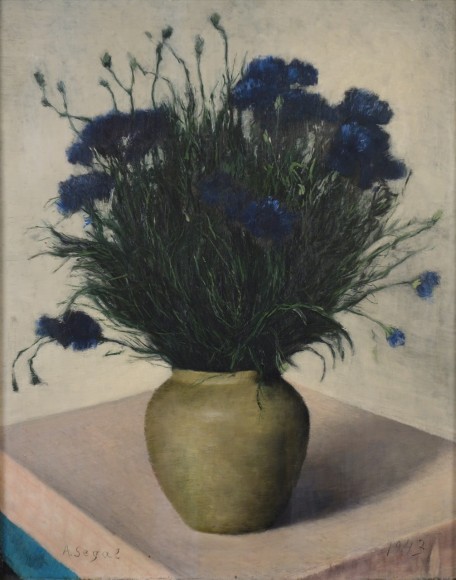Beloosesky Gallery is interested in purchasing paintings and drawings by Arthur Segal.
Please call (917) 749-4557 or email us at info@beloosesky.com
Arthur Segal (1875 - 1944) was a Romanian artist and author. He is considered the father of the Jewish avant-garde art scene in Romania. He was born to Jewish parents in Iaşi, Romania, and studied at the Berlin Academy from 1892. He studied with Schmid-Reutte and Hölzel in Munich in 1896, and later studied in Paris and Italy in the early 1900s.
After studying in Paris and Italy, he eventually moved to Berlin in 1904 where he exhibited his work with Die Brucke and Der Blaue Reiter, two leading German expression groups. In 1910 he co-founded the Neue Secession, a group of artists whose work was rejected by the Berliner Secession. Also in 1910 he had his first solo exhibition in Bucharest, where he introduced Romanians to modern art. Segal was firstly a painter, and his early work was heavily influenced by impressionism and neo-impressionism.
On the outbreak of war in 1914 he moved to Ascona, Switzerland with his family, and remained there until 1920. In Ascona, he became acquainted with other modern artists such as Hans Arp, Hugo Ball, and Tristan Tzara. Thanks to these connections, he took part in many Dada events. During the war, Switzerland became a refuge for many artists like Segal, and whilst he was there he exhibited some of his work with Arp and Dada in the Cabaret Voltaire in Zurich.
In 1920, he returned to Berlin, he began to develop a style of his own. In Berlin he founded his own art movement in 1923, The November Group. In 1925 he was offered a teaching job in New Bauhaus in Dessau, but he declined. Besides his work as a painter, a painting teacher and his numerous functions in the artist community, Segal created woodcuts, wrote book-manuscripts, published numerous essays in art-journals ad newspapers, and gave lectures on the radio live for various organizations. Following a ban on exhibiting his art, Arthur Segal left Germany in 1933 and moved to Mallorca, Spain. Later, he immigrated to London and succeeded in opening another painting school.
Arthur Segal died of a heart attack during a German bombardment in London in 1944.
PUBLIC COLLECTIONS
Indianapolis Museum of Art, Indiana
Jewish Museum, Berlin
Jewish Museum in Prague
Los Angeles County Museum of Art, California
Metropolitan Museum of Art, New York
Museum of Modern Art, New York
National Museum of Art of Romania
San Diego Museum of Art, California
Tate Museum, London
Thyssen-Bornemisza Museum, Madrid

